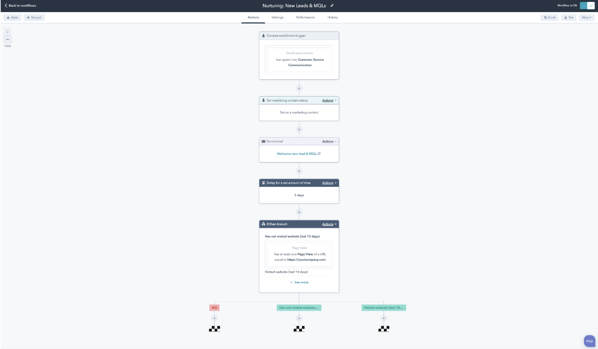Market segmentation is a powerful process because it separates your audience into groups so you can effectively target them based on traits such as the challenges they're facing and/or how they'll respond to certain marketing efforts.
The most effective way to determine which traits you'll use to group your audience is by using segmentation bases.
In this blog post, we'll cover the definition of segmentation bases, how to apply them at your company, and how you can use multiple segmentation bases at once.
Before we dive into the five segmentation bases, let's cover the basics.
Segmentation Bases in Marketing
Marketing segmentation assumes all of your customers are unique and can be categorized based on common defining characteristics or traits that you establish. Those characteristics or traits almost always fit within the five segmentation bases, which we'll review below.
Benefits of Using Segmentation Based in Marketing
By using segmentation bases in marketing, you’ll unlock opportunities that will help you:
- Improve the customer experience.
- Effectively market your products.
- Develop targeted marketing and sales enablement materials.
- Identify areas for product development.
- Show your target audience how you can resolve their challenges.
Segmentation Bases in Marketing Operations
Marketing operations is defined as the, “… people, processes, and technology that power a business’s overall marketing strategy and increase chances of success.”
While working on marketing, data strategy, implementation, and reporting, the marketing ops team can associate leads and contacts with your segmentation bases. That means they can surface strategies to effectively target those customer segments as well as reports, relevant dashboards, and metrics to track your success at marketing to those audience members.
As a result, your greater marketing team will have access to more organized marketing segments, contact data, reports, and relevant metrics. That means better customer experiences that convert more audience members.
Now, let's look at the five segmentation bases and their defintions.
1. Psychographic Segmentation
Psychographic segmentation refers to someone's psychological traits. This includes your audiences' lifestyle preferences and patterns, and why they think the way they do. It also covers their typical activities, interests, and opinions.
2. Demographic Segmentation
Demographic segmentation refers to the statistical description and socioeconomic traits of your audience. This includes age, education, and gender, birth rates, gender, marriage status, income, and employment status.
3. Geographic Segmentation
Geographic segmentation refers to the location in which your audience resides and/ or works. You can go as broad or as granular as you want with geographic segmentation — for instance, you may group your audience by continent, country, state/ city, town, neighborhood, and so on.
4. Firmographic Segmentation
Firmographic segmentation refers to a company's attributes and is helpful for B2B companies that are developing their segmentation bases. This includes but is not limited to their size, industry, and location.
(You might think of firmographic segmentation as demographic segmentation but for a business.)
5. Behavioral Segmentation
Behavioral segmentation refers to an audience group's actions, habits, and interactions. If you're thinking this sounds a bit like demographic segmentation, you're not wrong. But it goes deeper into one's buying habits than demographic segmentation does.
For instance, behavioral segmentation provides insight into the benefits that one gets from buying and using a certain product as well as how ready (or not ready) they are to convert into a customer.

Other relevant features you'll have access to with HubSpot's Behavioral Targeting tool are:
- Insights about the way your audience interacts with your site/ content.
- Active lists for advanced segmentation, targeting, and audience building.
- Event-based triggers for sending audience members messages at the right time.
Using Multiple Segmentation Bases
You don't have to just use one or two segmentation bases — you can use all five, or a mix of them.
And once you select the segmentation bases you're doing to move forward with, you aren't stuck with them forever. As your business evolves, so do your customer base and target audience. That means you'll naturally want to review, update, add to, and remove from your list of segmentation bases over time.
The key is using the segmentation bases that matter to your business accurately and applying them in a way that allows you to effectively target and reach the audience members within them.
Before we provide some tips on how to use multiple segmentation bases, let's take a moment to cover why you'd want to use multiple segmentation bases.
Why Use Multiple Segmentation Bases
Businesses use multiple segmentation bases — a process that's also known as multi-segment marketing — because the product or service that they sell applies to target audience members in different ways.
For instance, a business that sells tennis skirts may sell skirts to customers who play a lot of tennis, and to other customers who don't play tennis but want a workout skirt for other forms of activity (e.g. running, walking, etc.).
Multiple segmentation bases are also commonly used if your business sells more than one product or service. For instance, the company that sells tennis skirts may also sell tennis rackets and tennis shoes. The customers who need a skirt versus a tennis racket or shoes will need to be targeted differently. Especially if those tennis items are for both men, women, and kids.
How to Use Multiple Segmentation Bases
By using multiple segmentation bases, you'll get a better understanding of the people who complete your target audience — as a result, you'll be able to more effectively target them, meet (and exceed) their needs and expectations, and convert more of them into customers.
Here are some tips to remember while using multiple segmentation bases:
- Determine which segmentation bases you want to establish for your unique audience and how granular you want to go within those segments.
- Collaborate internally across marketing (and even sales) while identifying and defining your customer segments to ensure they're as accurate and helpful as possible.
- Review and update your segmentation bases if and when needed (e.g. take a look at them quarterly to ensure they evolve alongside your business).
- Get feedback from your team members (you can do this across marketing and sales) about the way your segments are organized. You can also survey (and incentivize) your current customers, or those who recently converted in some way, to ask for their feedback around your marketing content and targeting efforts.
Use Segmentation Bases to Grow Better
Using segmentation bases has a number of benefits. You can better understand your audience, target your leads and prospects more effectively, create and offer marketing and sales materials that better meet their needs, identify product development and marketing opportunities, and more. Begin working on your business's segmentation bases to grow better.






Recent Comments